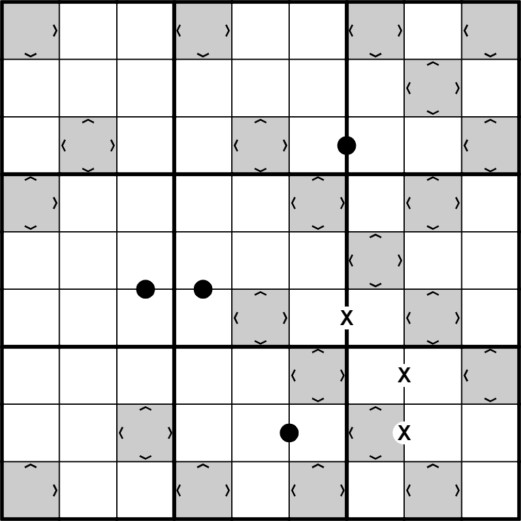Two Paths
(Eingestellt am 26. April 2022, 14:40 Uhr von Will Power)
Normal Sudoku rules apply. There are two paths of consecutive numbers from 1 to 9. One starts at the top of the grid and ends at the bottom. The other starts at the bottom and ends at the top. Consecutive numbers on each path touch orthogonally or diagonally. Numbers in gray cells are greater than ALL orthogonal neighbors. ALL POSSIBLE MAXIMUMS ARE SHOWN. Numbers with an X between them sum to 10. Numbers with a black dot between them are in a ratio of 2:1. Not all possible X and dots are shown.

Lösungscode: Row 4 and column 4.
Zuletzt geändert am 20. August 2022, 07:11 Uhr
Gelöst von fuxia, davidjshort, kublai, Cypher, jalebc, Dandelo, SKORP17, MB_Cyclist, tubahat, efnenu, beesquestionmark, peterkp, flaemmchen, mns, jgarber, thornquist, Felis_Timon, geronimo92, ParaNox, ManuH, Uhu, -Tsigje-, zrbakhtiar, Montikulum, Saskia, Dermerlin, Kekes, Crul, gonzalez87, metacom, larinae, bugsduggan, Ahrun, naggy, pms_headache
Kommentare
am 28. April 2022, 12:17 Uhr von mns
Great idea with the paths although I didn't need to use them that much.
Zuletzt geändert am 26. April 2022, 15:51 Uhr
am 26. April 2022, 15:49 Uhr von davidjshort
Nice use of the negative Maximum constraint.
@davidjshort Thank you. I appreciate the comments. -Will Power



